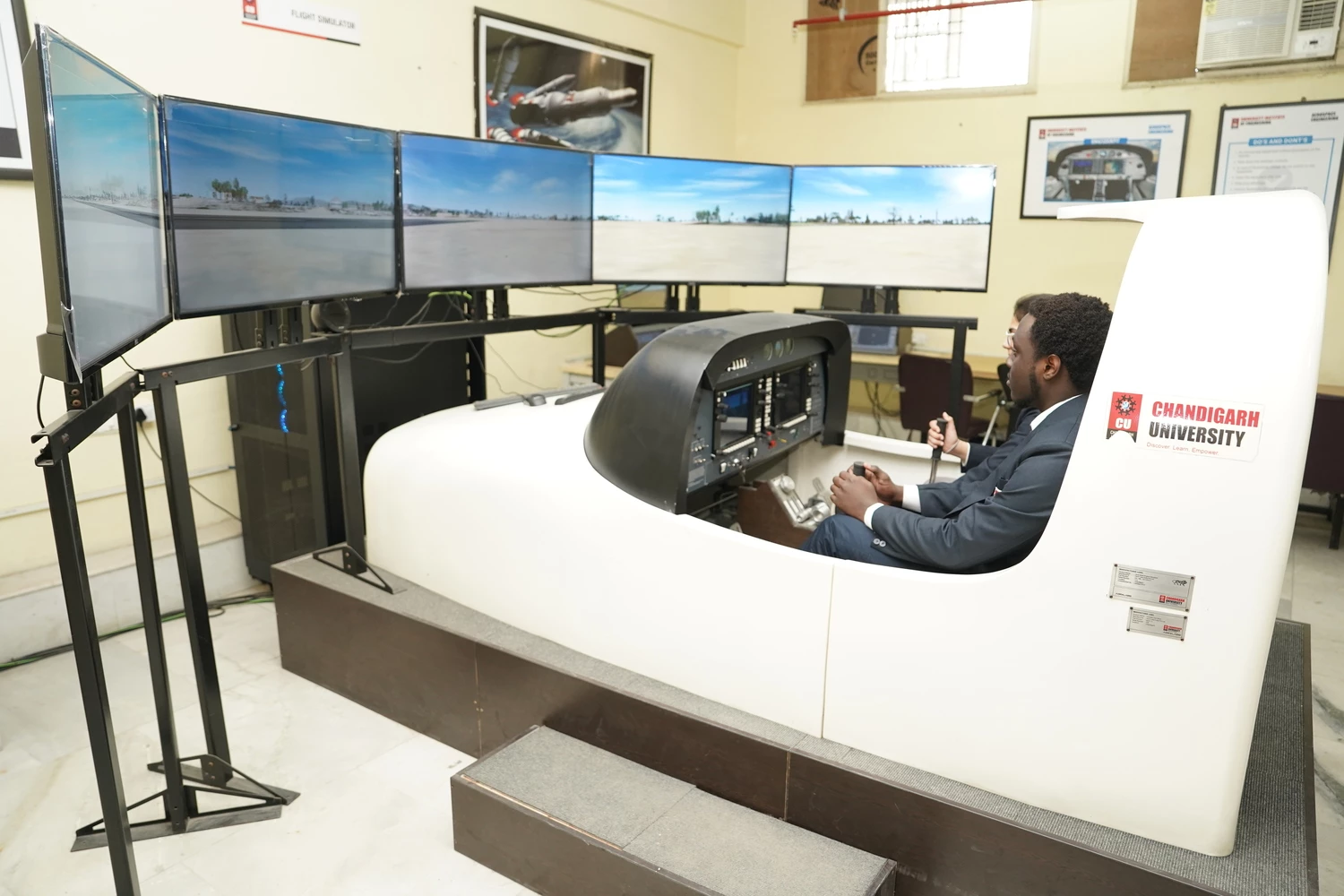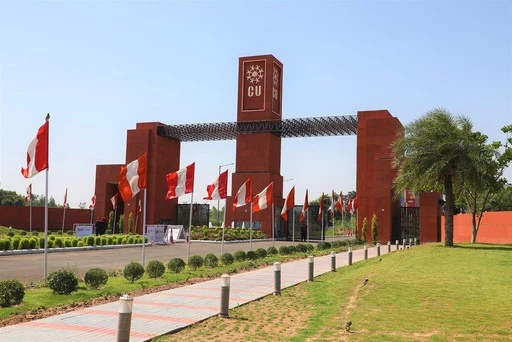Suppose you have ever looked up at a suspension bridge or walked into a reflective space that caused you to feel. In that case, you were crashing into two fascinating professions, Civil Engineering and Architecture.
The two professions both stem from a shared vision of shaping our surroundings, but ultimately, diverge drastically. Civil engineering is the foundation of everything we see and stand on. In a nutshell, Civil Engineers ensure the safety, strength and sustainability of what gets built. Where Civil Engineers are responsible for safety, strength and sustainability, architecture creates the artwork that is intended to fill space with intention, meaning and beauty.
So, if you’re a 12th standard student with PCM focused on the built environment, the real question you should be asking yourself is not “what job is better?” but rather “what job is better for you?” This blog will contain everything you need to know, including roles, skillset, courses, future scope, career fit to aid in making an informed decision. We will share how Chandigarh University is preparing students in both professions to become industry-ready professionals.
Understanding the Core: What Do Civil Engineers and Architects Actually Do?
To start, let's establish the roles. A civil engineer is responsible for designing, analyzing, and supervising infrastructure systems such as highways, bridges, dams, airports and any type of building. As part of their duties, civil engineers conduct load calculations in order to determine how much weight a structure can support, conduct soil tests in order to ensure the ground is stable, verify proper materials are used, and supervise construction, which ultimately helps to ensure proper construction codes are followed so that the project remains intact for a very long time.
For the architect, they start with a blank page. Architects think through how the building will look, feel and operate, and make decisions about all aspects of how the building will be constructed, they produce documents to be used to build structures, and then select materials based on such factors as user experience, natural light, aesthetic beauty, air ventilation, culture, sustainability, etc.. In short, civil engineer’s tell you if, and how, something can be built, and the architect creates the experience of how that structure will be used.
In short, civil engineers provide the bones; architects provide the flesh and soul.
Educational Path: What Will You Study and For How Long?
In order to work in civil engineering you have to complete a 4-year B.Tech/B.E. in Civil Engineering; you'll take classes in Structural Engineering, Transportation Engineering, Fluid Mechanics, Geotechnical Engineering, Environmental Studies, Construction Technology, and more, while getting practical experience through industrial training, labs, and live projects, not too mention theory and others.
If your interest lies more in architecture, you have to complete a Bachelor of Architecture (B.Arch) for 5 years, which also includes a full year of practical internship, and your courses are studio-based. You will study practical skills, which include: Design Principles, Building Construction, Climatology,
Required Skillsets: Are You More of a Problem-Solver or a Designer?
To be successful in civil engineering, you need analytical thinking skills, a strong math background, good logical problem-solving skills, and attention to detail. You will be dealing with technical information, technical computer-aided design (CAD), and simulations; therefore, you must be comfortable with numbers and calculations.
Architecture entails a different style of thinking. You will need to be creative, functionally aware of space, design oriented, possess communication skills, and have visual imagination. Architects often work using sketches, think in three dimensions, and convey designs that integrate functional and contextual utility with emotional utility. You will need to think simultaneously as an artist while planning as an engineer.
If you like to study and understand structural logic, and like the execution involved in getting your idea into the physical world, civil engineering might be an appropriate career path.
If you love design, creativity, and designing human-centric areas--architecture might be your true calling.
Career Opportunities: Where Can Each Degree Take You?
A degree in civil engineering opens doors in various sector, public infrastructure, real estate, urban development, smart cities, and environmental planning. Common job roles include:
- Site Engineer
- Project Manager
- Structural Engineer
- Geotechnical Engineer
- Environmental Consultant
- Transportation Planner
As India's infrastructure boom continues, the demand for civil engineers for highways, metro projects, smart city work, and renewable energy systems is tremendous. IBEF estimates that the Indian infrastructure sector will touch $1.4 trillion by 2025, ensuring this sector is sustainable and global.
In the field of architecture, the vocational options are expanding as design becomes a fundamental aspect not only in buildings but also in user experience. The various career roles are:
- Architect
- Urban Planner
- Interior Designer
- Landscape Architect
- Sustainable Design Consultant
- BIM Specialist (Building Information Modeling)
As urbanization increases architects are required outside of construction. They are also looking to fill roles in real estate, hospitality, entertainment, education, and public space planning. The Global demand for green building, climate-responsive designs, and experiential architecture has surged, as building owners are compelled to address climate change.
Chandigarh University: A Launchpad for Future Engineers and Designers
The B.Tech/B.E. program Civil Engineering and B.Arch programs at Chandigarh University are distinctively tailored to the objectives of the civil engineering industry, global standards of education and technology evolution.
The B.Tech/B.E. program Civil Engineering program at Chandigarh University is accredited by ABET, which is an equivalent standard of quality for colleges and universities in nearly every country in the world. The students have hands-on training in new laboratories - Construction Material Laboratory, Fluid Mechanics Laboratory, Structural Simulation Laboratory, etc. and receive a quality education with several collaboration partnerships that provide opportunities for design experiences by engaging with many companies such as UltraTech, DLF, and TATA Projects on practical problems of construction.
The Architecture program at Chandigarh University is approved by the Council of Architecture (CoA) and offers world-class facilities and resources, including; Design Studios, Visual Arts Laboratories, Climatic Laboratories, and software suites that include AutoCAD, Revit, Rhino, SketchUp, Lumion. The program strongly emphasizes experiential learning, through live design projects, architectural interpretation trips to heritage sites, internships with leading international design firms, and international collaboration through exchange programs.
Both programs strongly align their futures within sustainability, smart cities, and new-age technology that anticipate all graduates as not just employed professionals, but as leaders in their careers.
Collaboration in Practice: How Engineers and Architects Work Together
Architects and engineers often collaborate on projects but are usually complete tangents. An architect is usually charged with the design plan, aesthetics of the space, space design concept and how that space works in the early stages of a project. Once the architect is complete with design and approval, civil engineers will come on board to analyze and understand feasibility, structural integrity, adequate drainage with the existing site conditions and costs. It is at this stage that the architect makes sure the construction company is building as they imagined and at the same time the civil engineer is managing safety, execution, as well as supervising the technical components of the job.
It is really a relationship of balance- creativity vs. practical. The best projects are where both the engineers and architects collectively understand and appreciate all of the roles in the process.
How to Decide: Ask Yourself the Right Questions
Making your decision is about more than just job prospects - it’s also about your personality, interests, and most importantly what you care about. Here are just a sample of the questions you can ask yourself:
- Do I enjoy solving real world problems with math and logic? → Civil Engineering?
- Do I value design, art, and planning spaces? → Architecture?
- Do I enjoy working outdoors and with large scale projects? → Civil Engineering?
- Do I enjoy visualizing spaces and how people physically use or how they interact with the space? → Architecture?
- Do I enjoy being detail oriented, data driven and want to ensure safety and precision? → Civil Engineering?
- Do I want to be able to leave my artistic design signature of the world? → Architecture?
- There are no wrong answers, only your personal fit based on your strengths.
Conclusion: Create the Future, Your Way
Whether you're designing an earthquake-resilient smart city, or developing a museum experience, both civil engineering and architecture will allow you to create the future. You are not just making a career decision; you're determining how you might shape the world.
At Chandigarh University, you will discover not just a program, but a career committed to creativity, mentorship, experience, and the world. When you have the passion and the context that nurtures it, you can discover your purpose and what that might mean, whether you are calculating the loadings on structural elements, or designing new horizons.
So, take your time, contemplate your interests and trust your intuition.
Because the future is not just something we come to, it is built or designe,d and it starts on this day.
Watch the video given below to know more details:
Chandigarh University Popular Courses
Average Fees
Get Fees Details
Highest Package
-
Admission 2025
View BrochureAverage Fees
Get Fees Details
Highest Package
-
Admission 2025
View BrochureAverage Fees
Get Fees Details
Highest Package
-
Admission 2025
View BrochureTop Recruiters
 CAP Gemini
CAP Gemini
 Deloitte
Deloitte
 FMC Technologies
FMC Technologies
.png) Hewlett-Packard (HP)
Hewlett-Packard (HP)
 microsoft
microsoft
 Wipro
Wipro
 Infogain
Infogain
 Wipro
Wipro
 Infogain
Infogain
 Wipro
Wipro
 Infogain
Infogain
 ITC
ITC
 JSW
JSW
 L & T INFOTECH
L & T INFOTECH
 Mahindra & Mahindra
Mahindra & Mahindra
 NEC HCL
NEC HCL
 newgen
newgen
 Zycus
Zycus
 Adobe
Adobe
 samsung
samsung
 IBM
IBM
 Igate
Igate
 NIIT
NIIT
 Google
Google
 Amazon
Amazon
 FLIPKART
FLIPKART
 HP India Pvt. Ltd.
HP India Pvt. Ltd.
 DELL
DELL
 newgen
newgen
 ITC INFOTECH
ITC INFOTECH
 l&T INFOTECH
l&T INFOTECH
 Headstrong India
Headstrong India
 GODREJ Pvt. Ltd
GODREJ Pvt. Ltd
 Oracle
Oracle
 Capital IQ
Capital IQ
 Just Dial
Just Dial
 Apollo Healthcare
Apollo Healthcare
 Genpact
Genpact
 Motorola India Limited
Motorola India Limited
 TATA AIG
TATA AIG
 Anchor Switches
Anchor Switches
 IBM
IBM
 Taj Group of Hotels
Taj Group of Hotels
 Siemens AC
Siemens AC
 Radisson
Radisson
 Kotak Mahindra Bank
Kotak Mahindra Bank
 rbs
rbs
 Adecco
Adecco
 Wipro BPO
Wipro BPO
 Leela Hotel
Leela Hotel
 Le Meridian
Le Meridian
 Wockhardt Ltd.
Wockhardt Ltd.
_Pvt_Ltd_(Naukri.com).png) Info Edge (India) Pvt Ltd (Naukri.com)
Info Edge (India) Pvt Ltd (Naukri.com)
 Eureka Forbes
Eureka Forbes
 SHOPPERS STOP
SHOPPERS STOP
 Schwing Stetter
Schwing Stetter
 Oberoi Hotels
Oberoi Hotels
 WEEXCEL SOFTWARES
WEEXCEL SOFTWARES
 HDFC Bank
HDFC Bank
 Canara Bank
Canara Bank
 Axis Bank
Axis Bank
 Google
Google
 Amazon
Amazon
 microsoft
microsoft
 IBM
IBM
 Wipro
Wipro
 Cognizant
Cognizant
 Adobe
Adobe
 HONDA
HONDA
 Dell
Dell
Student's Rating for Chandigarh University
Gallery
67 Images
CU

Campus

Gym

Hostel

Indoor Eating Point

Indoor

Aerospace Lab

Library
Chandigarh University Videos
14 VideosContact Details
NH-95, Chandigarh - Ludhiana Highway, Gharuan, Greater Mohali
81XXXXXX72
suXXXXXXin







.webp)
.webp)
.webp)
.webp)
.webp)
.webp)
.webp)
.webp)
.webp)
.webp)
.webp)
.webp)
.webp)
.webp)
.webp)
.webp)
.webp)
.webp)
.webp)
.webp)
.webp)
.webp)
.webp)
.webp)
.webp)
.webp)
.webp)
.webp)
.webp)
.webp)
.webp)
.webp)
.webp)
.webp)
.webp)
.webp)
.webp)
.webp)
.webp)
.webp)
.webp)
.webp)
.webp)
.webp)
.webp)
.webp)
.webp)
.webp)
.webp)
.webp)
.webp)
.webp)
.webp)
.webp)
.webp)
.webp)
, Chandigarh.webp)









